After the comparatively good night’s sleep, I woke up quite rested and first I opened the balcony door in order to enjoy the view and the absolutely perfect temperature. I had already been woken up earlier by different local birds (sparrows and pigeons), but I still rested rather well.
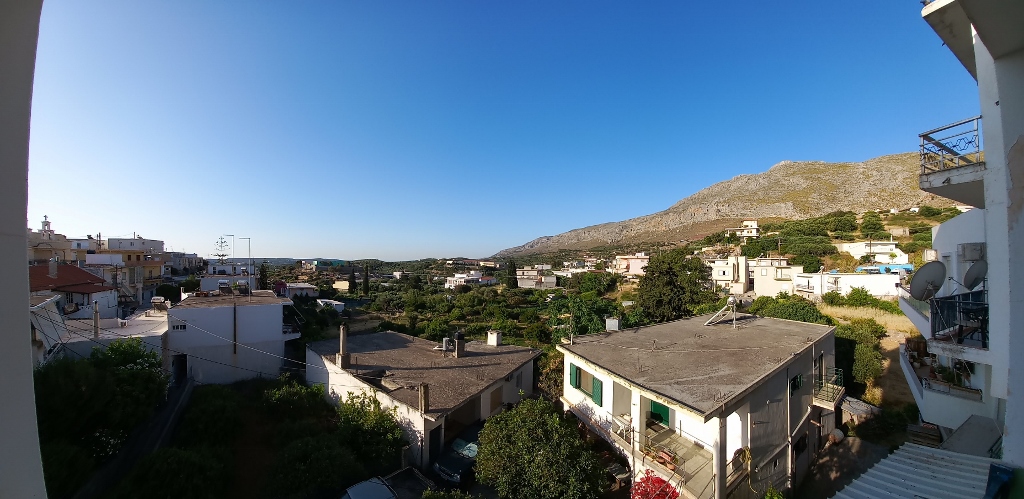 View at a part of village Ano Zakros
View at a part of village Ano Zakros
Having woken up completely, I checked the internet and transferred my photos to a site as a back-up. Although the hotel had certainly seen its heyday a long time ago, I must say that the internet connection was superb. It was amazing how fast I managed to transfer a lot of photos, which is by the way my regular practice when I travel. I’m trying in this way to save my photos in a couple of places, while I can re-use the memory cards. Afterwards I packed up and went down for breakfast.
I took a seat on the balcony and the landlady brought me simple breakfast which I ate soon enough, but before I went up to the room once again I wanted to pay for what I owed. Incredibly, she and her husband who had arrived in the meantime calculated only the beer of the last night, while they ignored the two smaller plates with the meze and the car transportation from the beach to the hotel, Although this was more than kind on their side, I thought it would be inappropriate for me to take advantage of their kindness, so I paid for two beers. I think that this was ok and balanced out.
I took my luggage to the car, packed it all up nicely and went down from village Zakros or to be more accurate from Ano Zakros, meaning Upper Zakros, to Kato Zakros, i.e., Lower Zakros.
Along the way I made a stop and took a couple of photos that show this area nicely. The first photo below shows Kato Zakros – allegedly a settlement and in fact a group of houses near a beach.
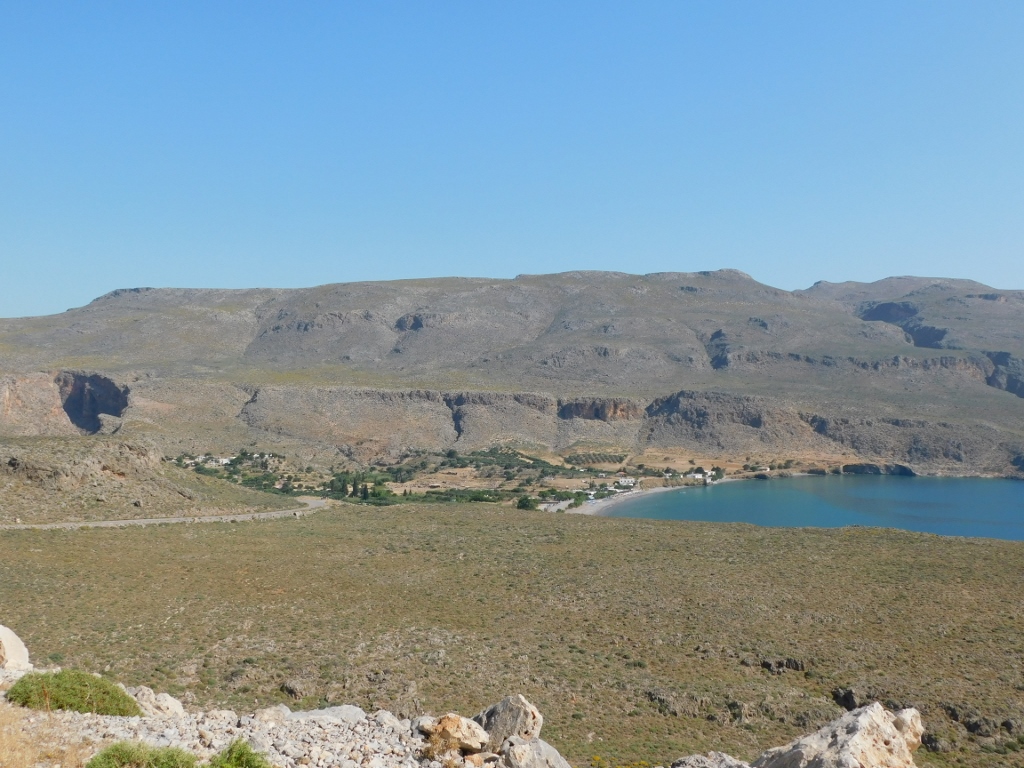 View at Kato Zakros
View at Kato Zakros
In the photo above, to the left, one can see the Gorge of Kato Zakros through which I walked the previous day, while the photo below shows this same detail zoomed in.
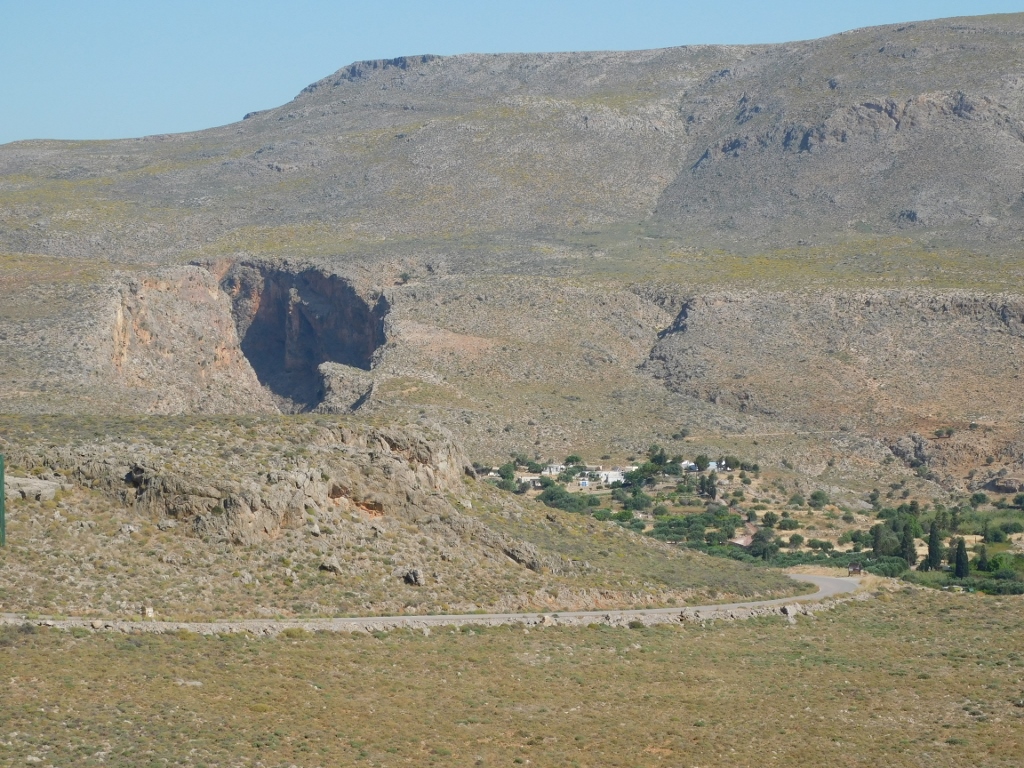 View at a part of the Gorge of Kato Zakros
View at a part of the Gorge of Kato Zakros
So, here in Kato Zakros I finished with my walk through the gorge the day before, but I was too late to visit the archaeological site that includes one of the most important Minoan palaces – Zakros.
Actually, I think that the right thing to do, because of the picturesqueness of the experience, would be for the visitor to go through the gorge before the closing of the site and then before getting to the beach and the possible beer (my recipe) visit this important site that together with several other palatial centres is inscribed in the UNESCO’s Tentative List of world heritage.
 Archaeological site of Zakros
Archaeological site of Zakros
Namely, together with Knossos, Kydonia and Phaistos that I had already visited and Malia I was yet to visit, Zakros constitutes a group of five large Minoan palatial centres or complexes that included a large palace, auxiliary structures and a settlement.
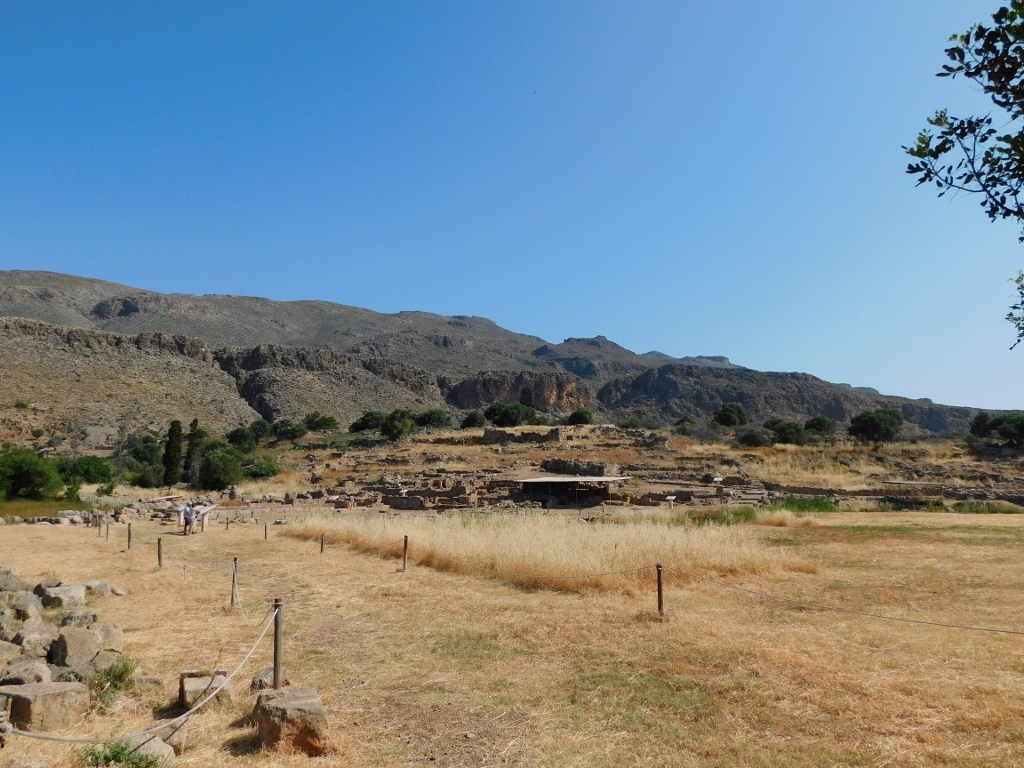 Archaeological site of Zakros
Archaeological site of Zakros
Although this is a significantly smaller site in terms of its size in relation to those I had already visited and it is also not too popular because it is smaller and relatively far from the main tourist routes, in my mind Zakros was much better prepared for the visits of laymen. The information boards were good and very clear.
Like the other Minoan palaces, the palace in Zakros was arranged around a rectangular Central Court in the form of four wings and I organised my visit by approaching the court from the direction of the South Wing. The buildings in this part of the complex used to serve as workshops which could be concluded on the basis of the finds and among other things the researchers have established that this was the place where perfumes, or rather scented oils, were produced.
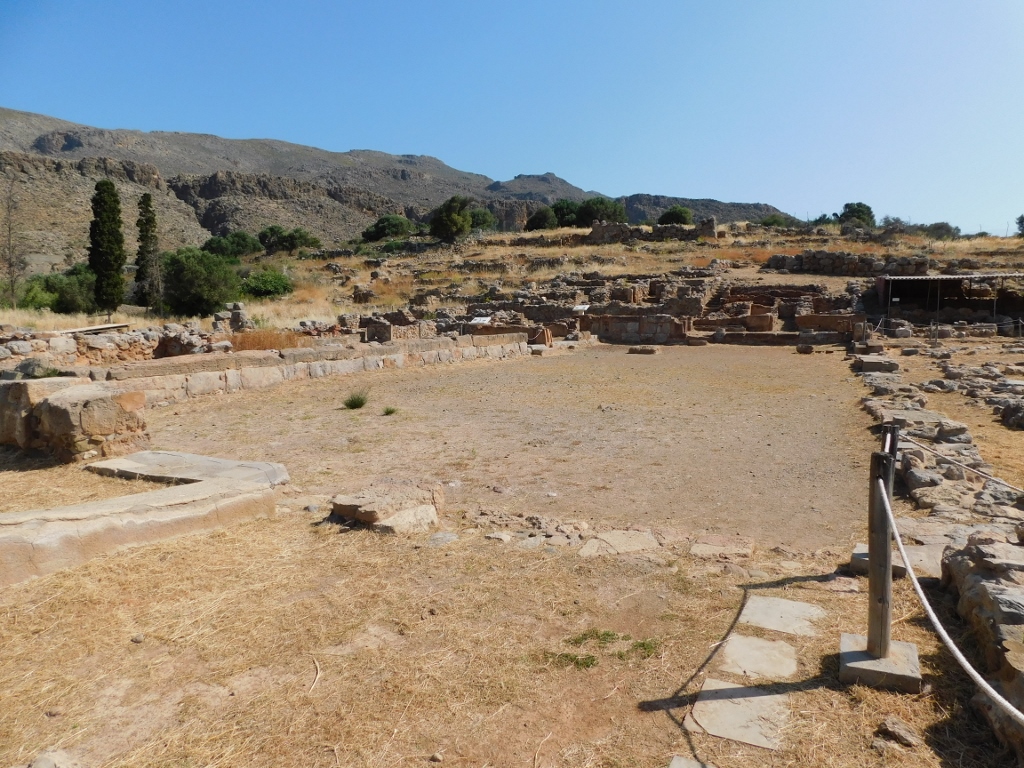 Archaeological site of Zakros: view at the Central Court from the area of the South Wing
Archaeological site of Zakros: view at the Central Court from the area of the South Wing
By the way, all of these buildings, the remains of which can be seen at the site, were destroyed, as it is presumed, in an earthquake in the 15th century BCE.
Having crossed the Central Court, I reached the West Wing.
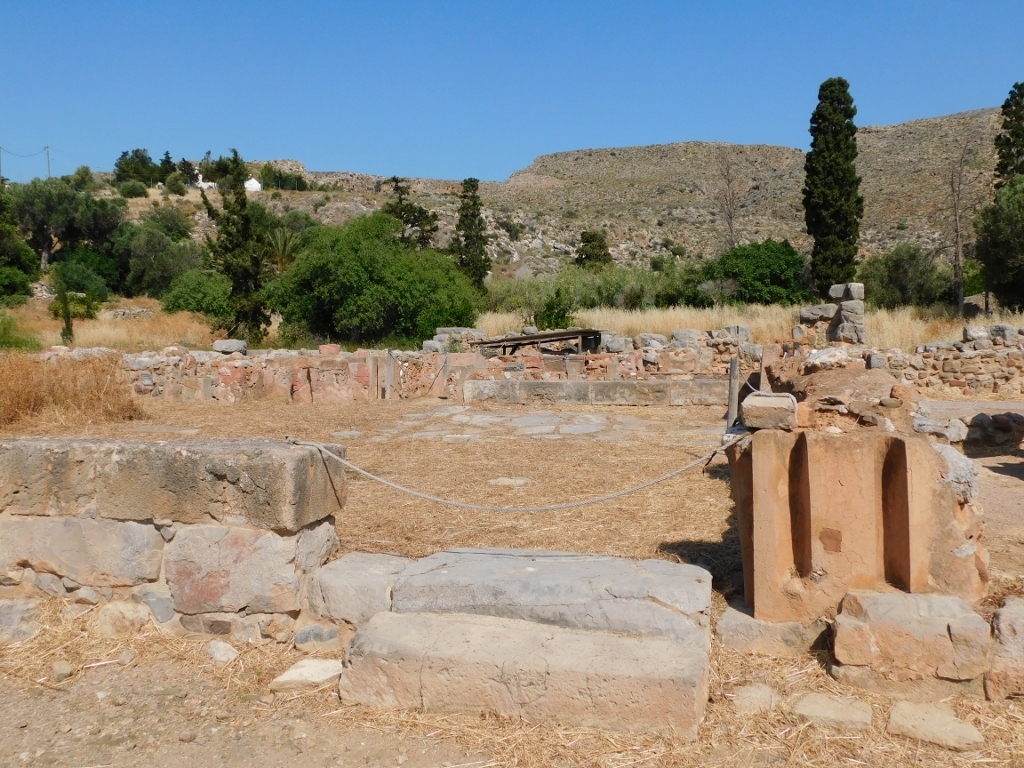 Archaeological site of Zakros: a part of the West Wing
Archaeological site of Zakros: a part of the West Wing
This is where the religious centre and the warehouses of the palace used to be. In the rooms in the back of the wing, the researchers have discovered remains of pithoi and other vessels. This storage space is comparatively small and thus the archaeologists have concluded that Zakros relied more on maritime trade with Egypt and East Mediterranean, after all it is but a couple of hundred metres away from a deep bay, than on the storing of agricultural products.
On the other hand, in the section of the West Wing right behind the Central Court, there are sacral rooms, while the room the remains of which can be seen in the photo above has been named “Hall of Ceremonies.”
As for the North Wing, there used to be a large hypostyle hall which the researchers called “Kitchen” on account of a large number of animal and bird bones, and also a tripod cooking pot has been found here. The adjacent room in this wing was used for the storing of cooking pots and equipment. By the way, these interesting finds have been made possible thanks to the fact that after the destruction in the earthquake, the remains of the palace were not looted.
On the elevation above the North Wing of the palace, seen in the photo below, there are parts of a Minoan settlement.
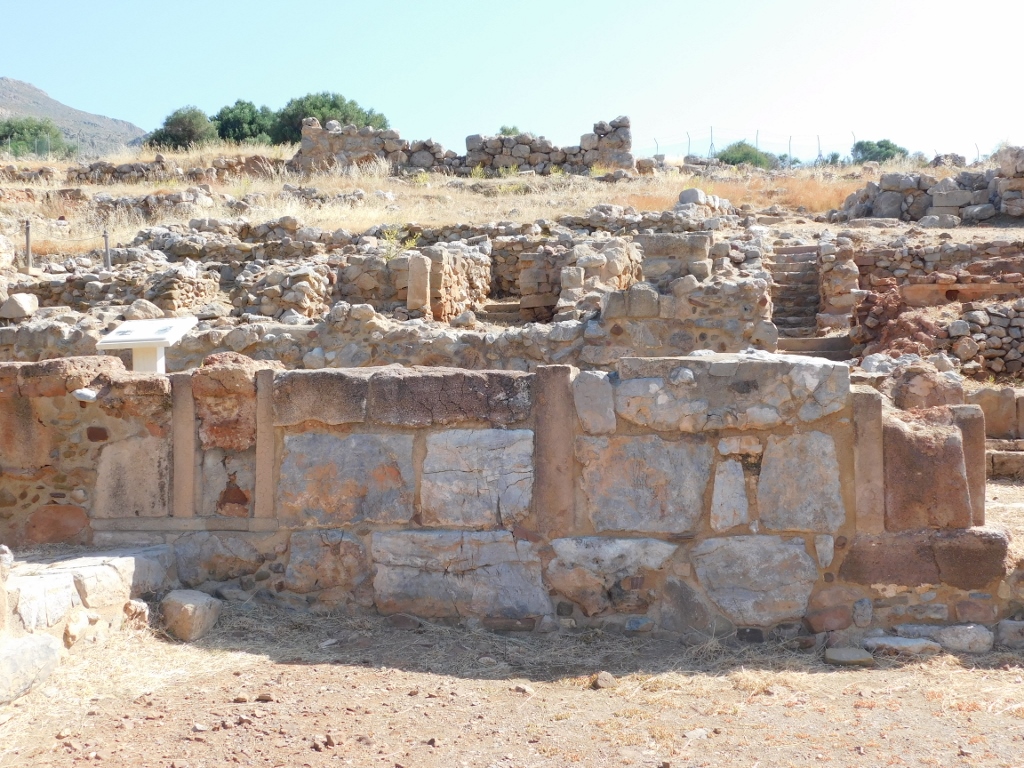 Archaeological site of Zakros: a part of the North Wing
Archaeological site of Zakros: a part of the North Wing
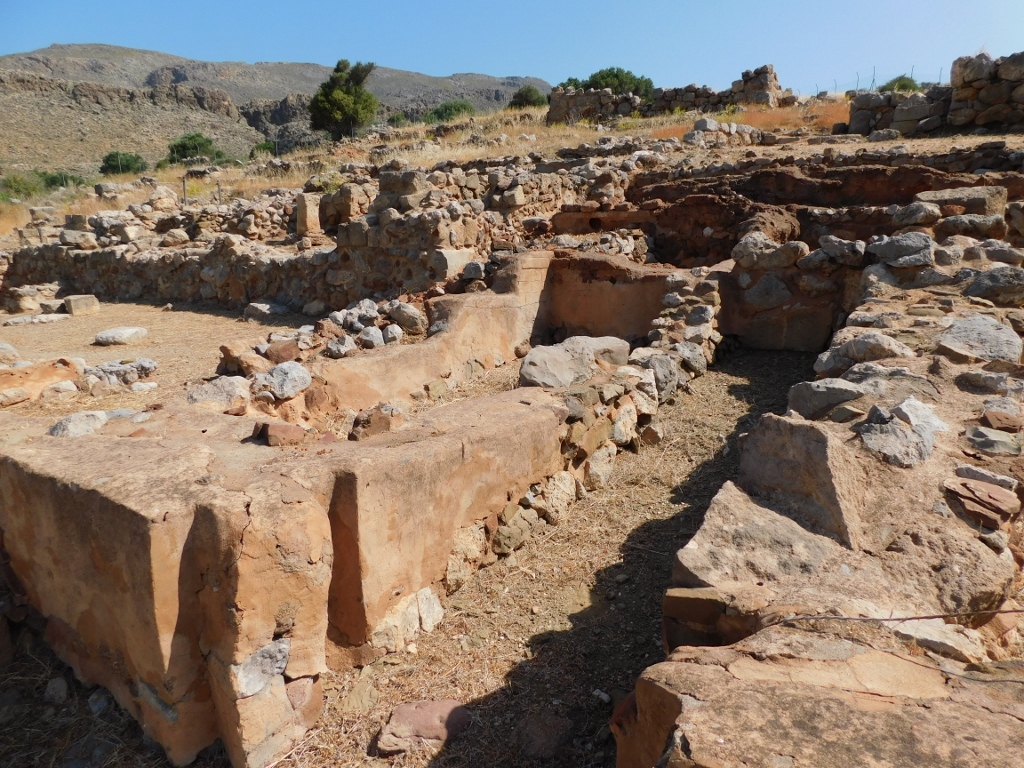 Archaeological site of Zakros: a part of the North Wing
Archaeological site of Zakros: a part of the North Wing
As for the palace itself, it used to have at least two floors, while the royal rooms were located in the East Wing. Little has been preserved in this part of the site because before the archaeological excavations agricultural crops were grown in this area.
Still, today it is possible to see remains of the Queen’s Megaron and a lustral basin that came with it.
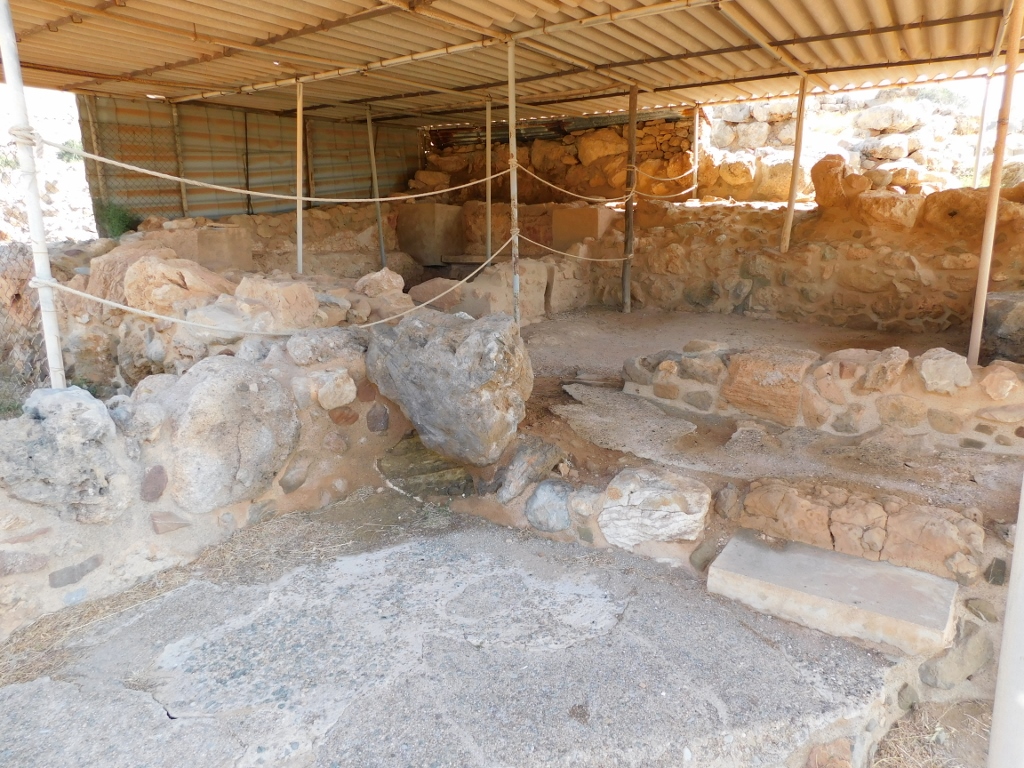 Archaeological site of Zakros: Queen’s Megaron
Archaeological site of Zakros: Queen’s Megaron
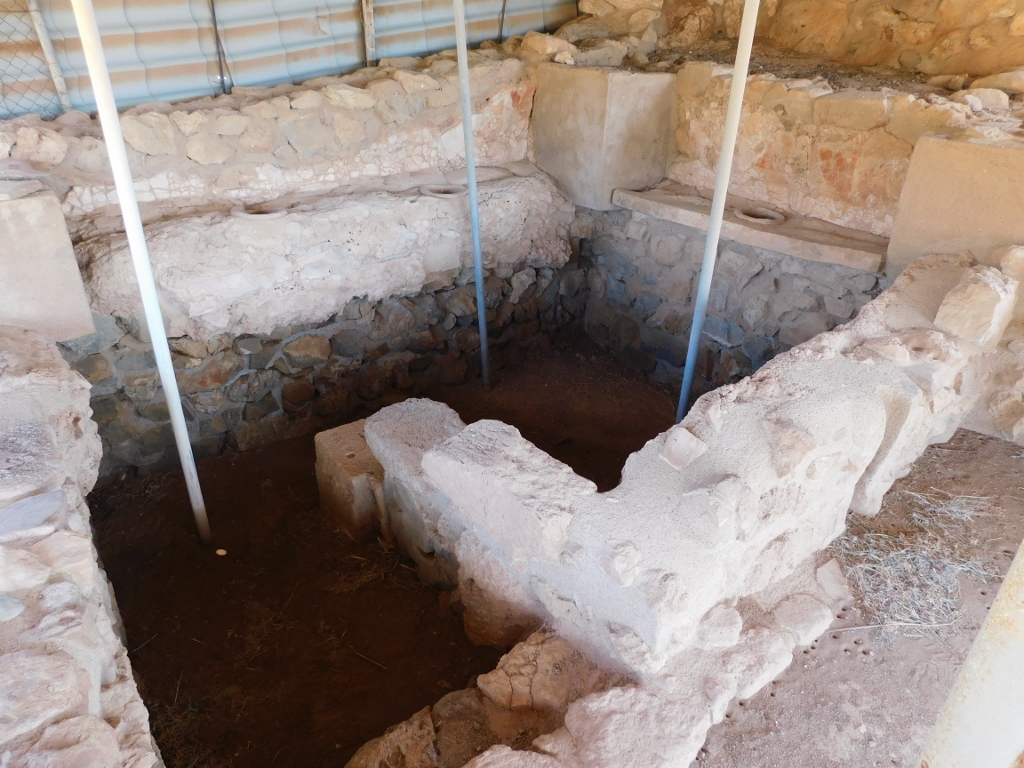 Archaeological site of Zakros: the lustral basin
Archaeological site of Zakros: the lustral basin
After this, passing across the northeast court I reached a section of a paved road that used to lead towards the settlement, as well as farther towards the port.
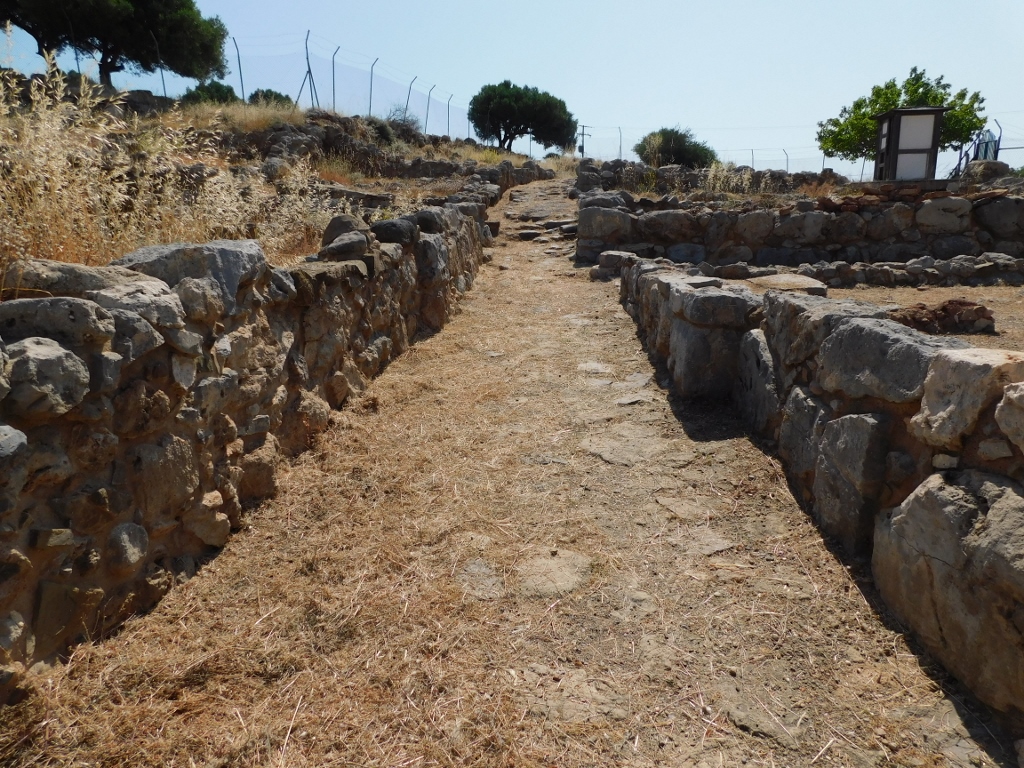 Archaeological site of Zakros: street leading to the Minoan settlement and the port
Archaeological site of Zakros: street leading to the Minoan settlement and the port
The settlement comprises around 35 houses, that is, their remains and it is believed that they simply went along the palace and were not independent. The population density was high and there were no open spaces in this part.
I did not venture into the part of the site with the remains of the settlement, but rather turned around and looked at the overall site again, this time also taking into account some of the by now familiar sections. In the photo below, on the left-hand side, there is the road that leads from the Gorge of Kato Zakros to the beach.
 Archaeological site of Zakros
Archaeological site of Zakros
As for the site itself, from here I could see well parts of the Old Palace Quarters or, rather, their modest remains.
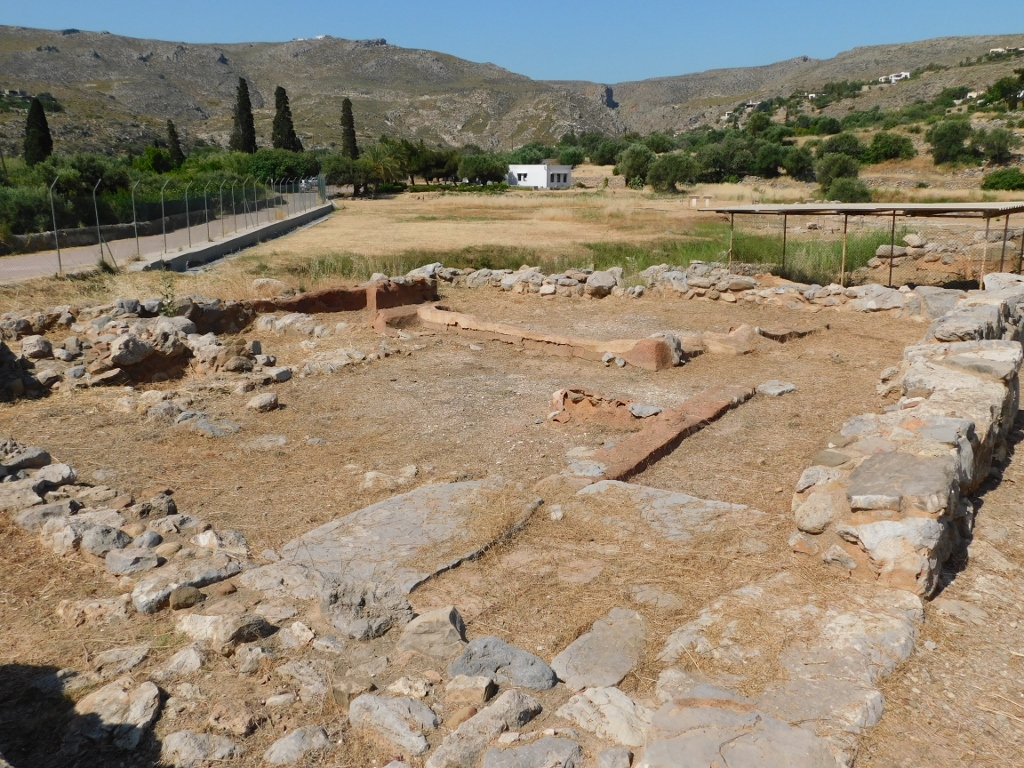 Archaeological site of Zakros: parts of the Old Palace Quarters in the East Wing
Archaeological site of Zakros: parts of the Old Palace Quarters in the East Wing
The East Wing also includes a circular cistern with stone steps leading into it.
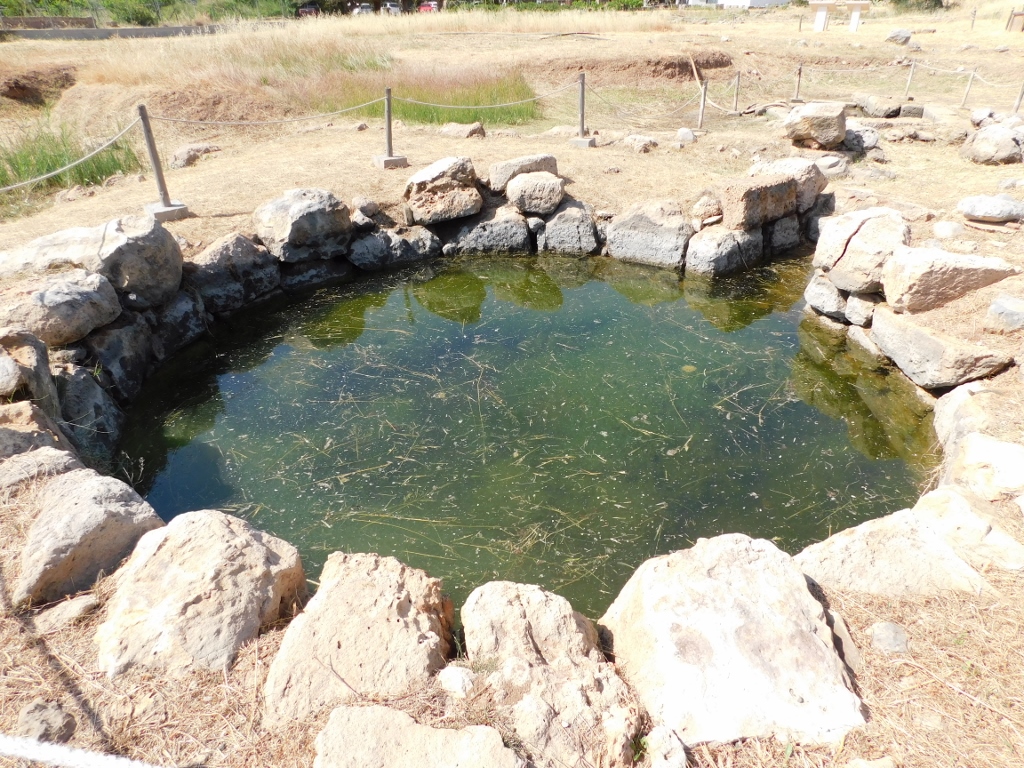 Archaeological site of Zakros: cistern in the East Wing
Archaeological site of Zakros: cistern in the East Wing
However, here I made a short break in my dealing with archaeology and history, and I moved on to biology. This happened for some very clear reasons – there were several European pond turtles (Emys orbicularis) in the cistern, while it was circled by male scarlet dragonflies (Crocothemis erythraea) which, unlike the turtles, were restless and I had to be very patient to be able to take a photo of them once they stood still for a shortest while.
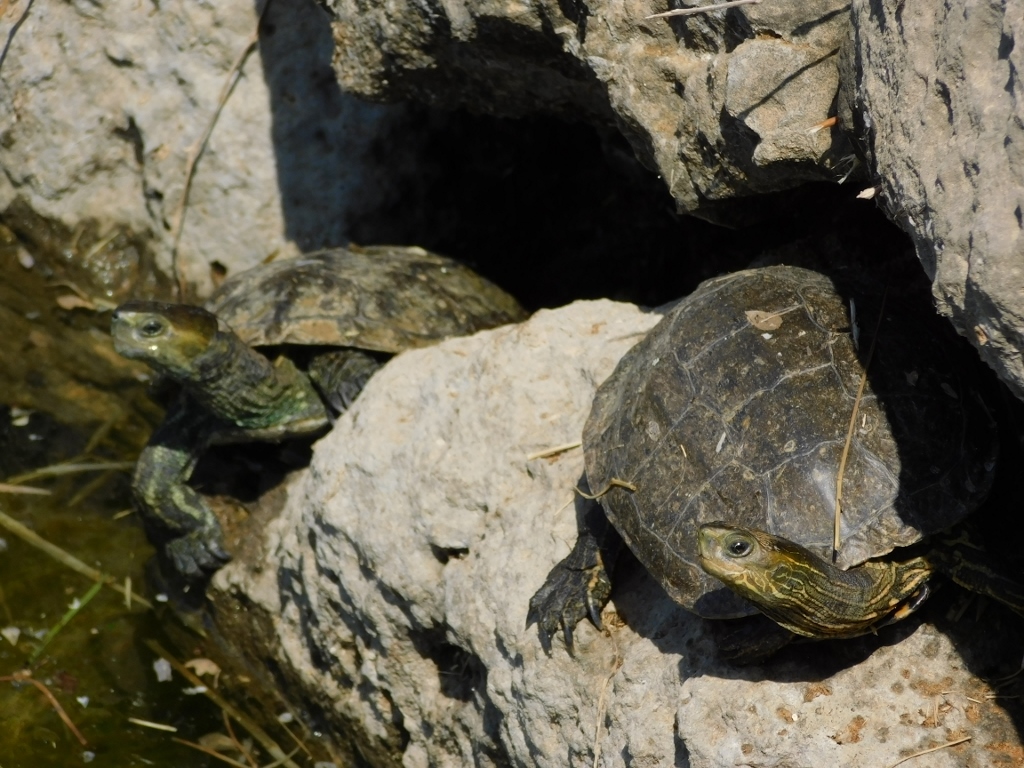 European pond turtles
European pond turtles
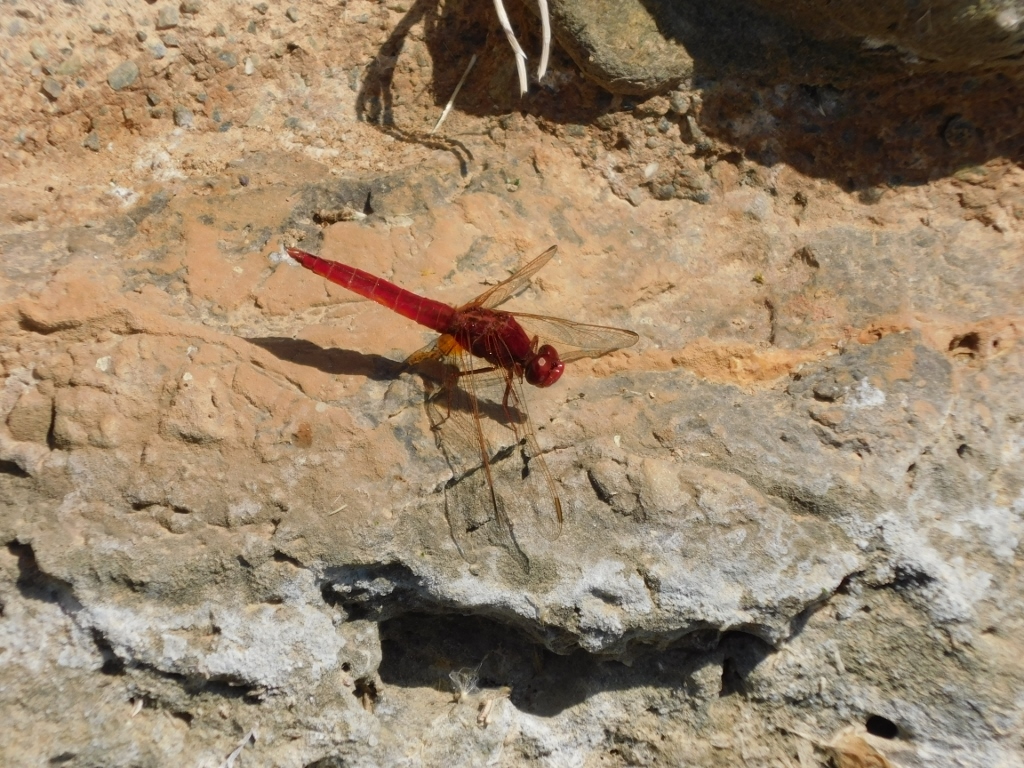 Scarlet dragonfly
Scarlet dragonfly
Directly near the cistern there is also a rectangular Well of the Fountain that is supplied by water from an underground spring.
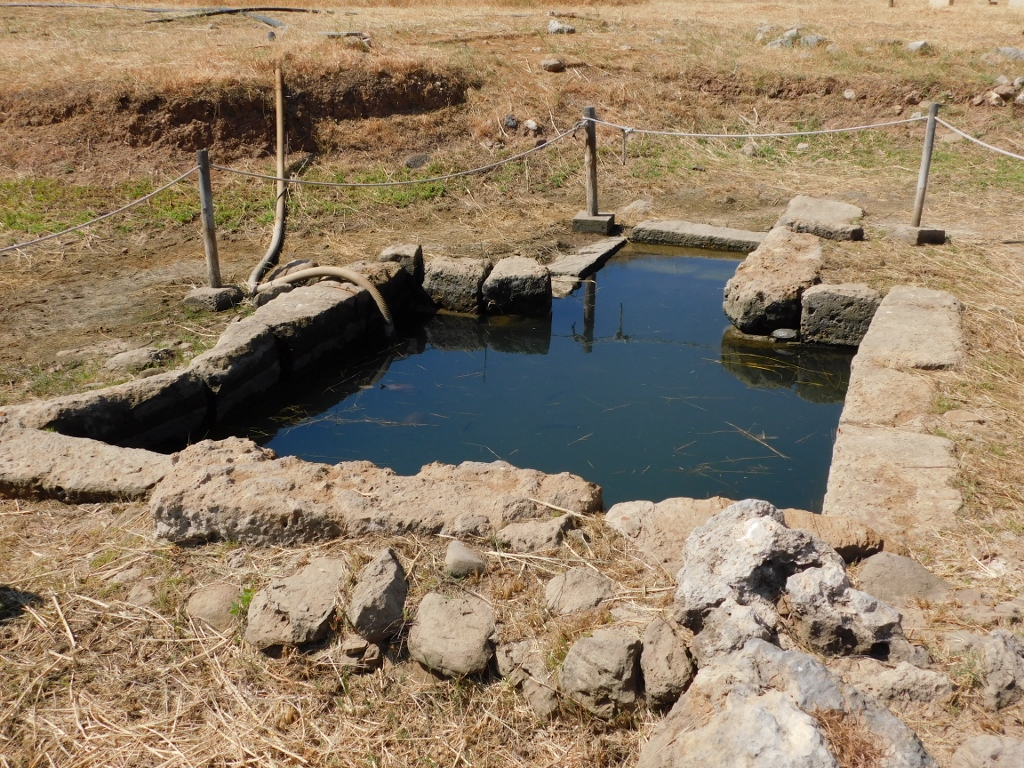 Archaeological site of Zakros: Well of the Fountain
Archaeological site of Zakros: Well of the Fountain
There I also saw some of the local residents: again a couple of small pond turtles, as well as a female emperor dragonfly (Anax imperator) that was in the middle of laying eggs.
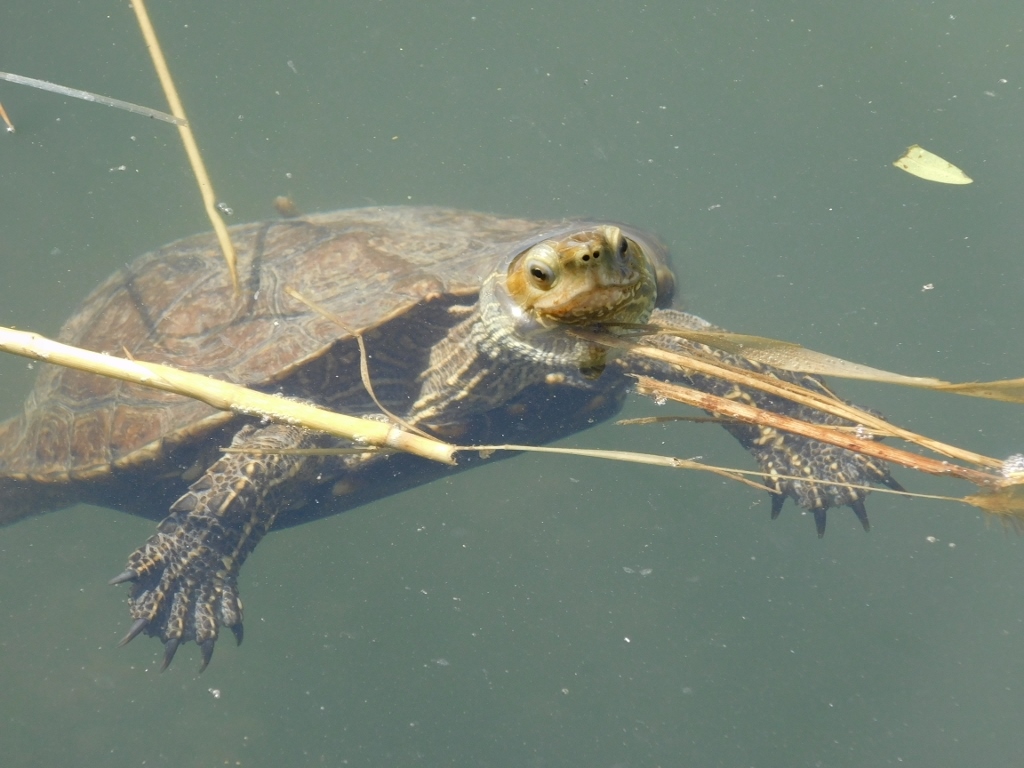 European pond turtle
European pond turtle
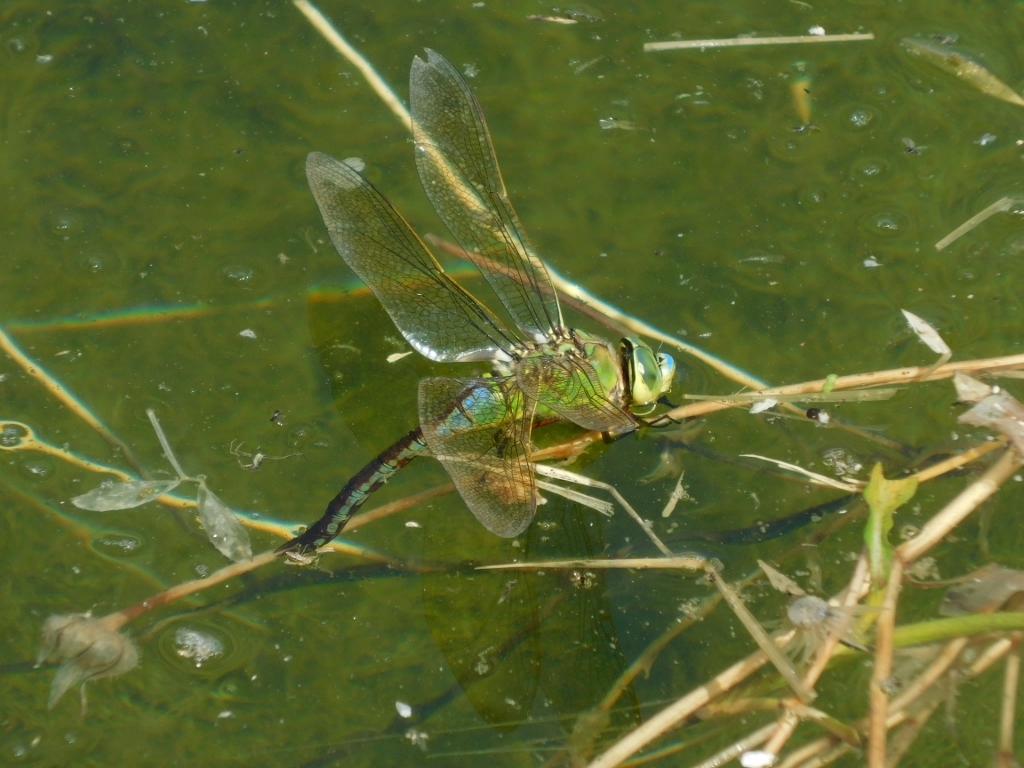 Female emperor dragonfly
Female emperor dragonfly
Here I practically completed my visit to the archaeological site of Zakros from the period of the Minoan civilisation and all I had left to do was to take a couple of photos more.
 Archaeological site of Zakros
Archaeological site of Zakros
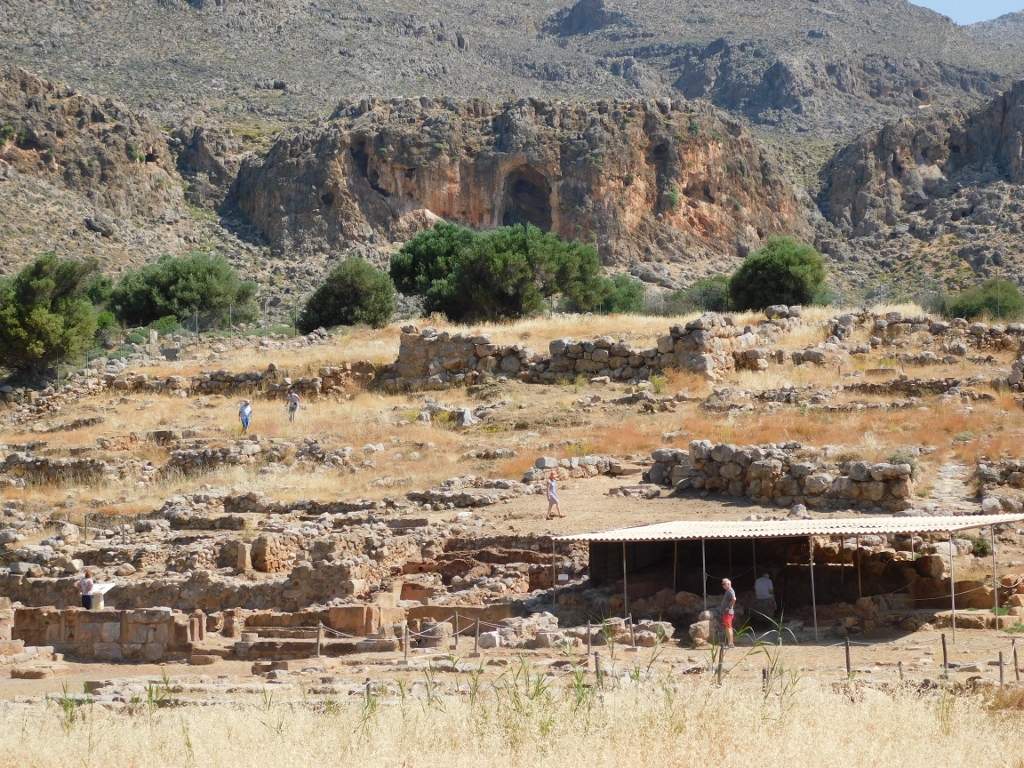 Archaeological site of Zakros, a detail
Archaeological site of Zakros, a detail
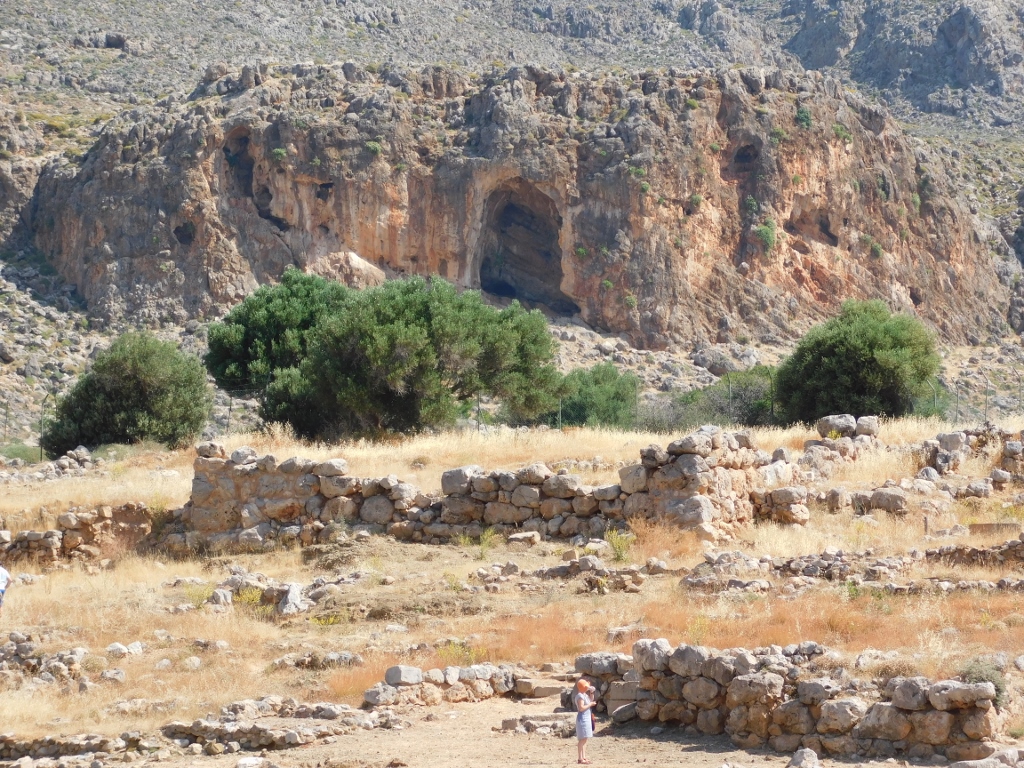 Archaeological site of Zakros, a detail
Archaeological site of Zakros, a detail
Having finished with the sightseeing tour around this smallish archaeological site located in a truly magnificent place, I thought that I could perhaps have a coffee on the beach of Kato Zakros, but since my next destination was also a beach with a reputation of being one of the most beautiful on Crete, I postponed the coffee break for that other beach.
I drove again, of course, through village Ano Zakros and further towards the northeast of Crete I stopped for a moment in order to admire once again the beauty of the landscapes in the southeast of Crete, precisely with Ano Zakros in its centre.
 Southeast Crete
Southeast Crete
Some 50 minutes later I drove to the Palm Forest Vai that fills out a relatively narrow and flat area between a couple of hillocks. This area looks like a real oasis with around 5000 palms. This is a natural palm forest and the only such forest in Europe.
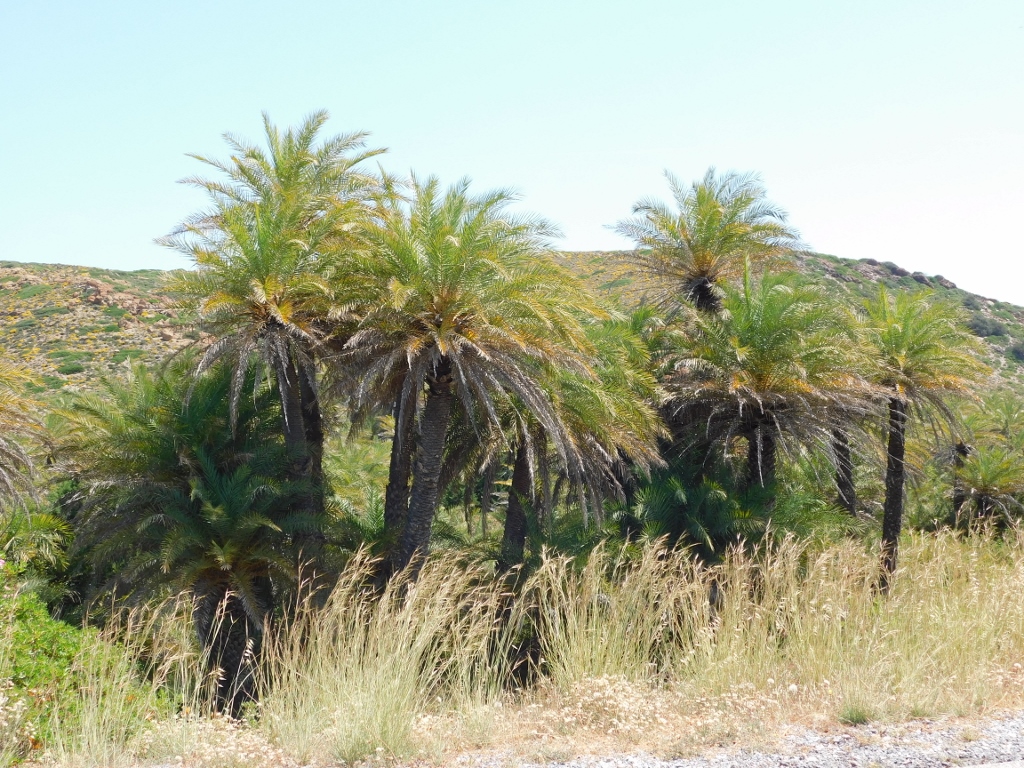 Palm Forest Vai, a detail
Palm Forest Vai, a detail
The road leads beside the forest and right towards that beach with the excellent reputation that is called just like the palm forest – Vai.
The beach is beautiful, no question about it, but I must admit that I preferred the beaches of Xerokampos. Still, this one is organised in a completely “professional” way. The end of the road leads directly to a parking lot. Having left my car there, I got to the beach, but I first climbed the nearby hillock because of a viewpoint positioned there.
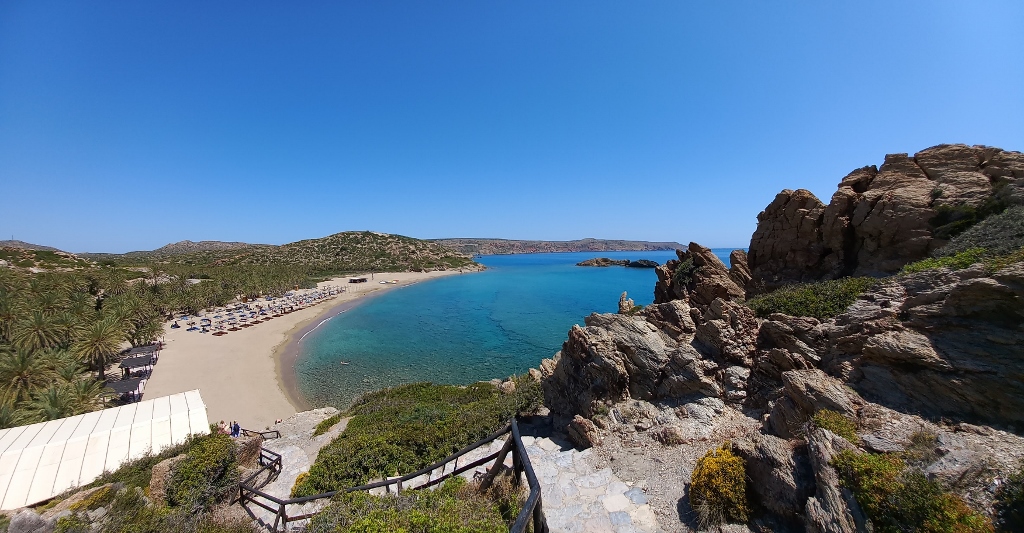 Vai Beach
Vai Beach
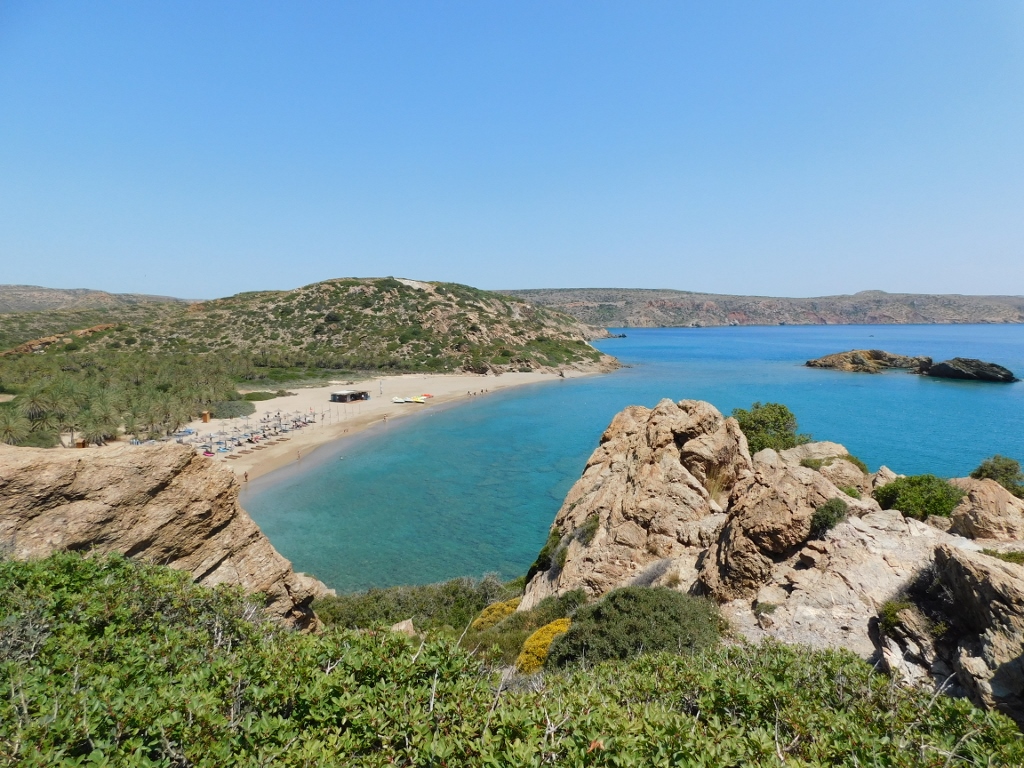 Vai Beach
Vai Beach
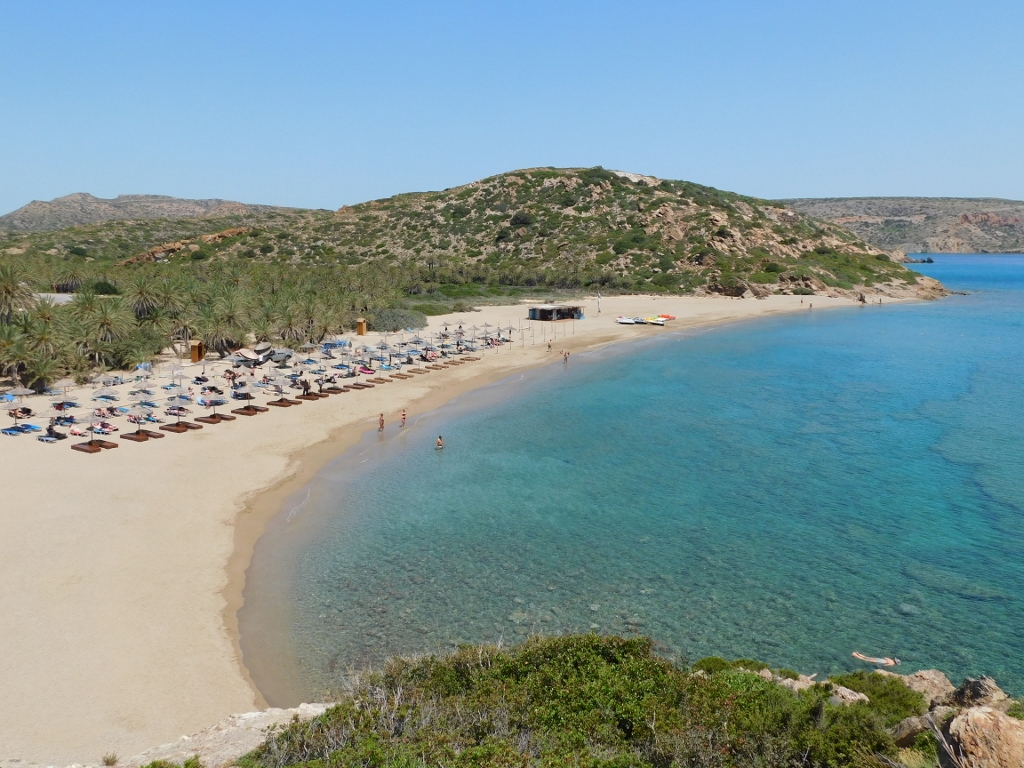 Vai Beach
Vai Beach
Vai Beach is made of fine sand and it is situated in the far northeast of Crete. Earlier, when I wrote about my stay in Matala (https://www.svudapodji.com/en/crete-14/), I mentioned that hippies used to stay there for a certain period of time, but the local population expelled them from there. They had to move because of this and so at the beginning of the 1980s they came right here, to Vai Beach. But, for various reasons they could not stay here forever either. I don’t know what happened with the hippies in the end, but today, as I’ve said, this is quite a well organised beach and everything needs to be paid for, although it did not seem too expensive to me.
In any case, the water seemed absolutely seductive, so soon I descended down to the beach and rented a sun lounger under a parasol although I knew I would stay there only for an hour or two.
 Vai Beach
Vai Beach
 Vai Beach
Vai Beach
It was rather warm, the water seemed splendid and I also saw some people swimming. I thought I could go in after all and swim for a while. Boldly I ventured into the water. Knee-deep. I was standing there, hoping that my legs would get used to the coldness. They did not. The same way I went in I also went out. During the lying on the beach I did have yet another attempt at going into the sea, but the result was the same as the first time around. I do like somewhat warmer water. For me, this was just far too early in the season.
And as for those people who were in the water, I could hear them and then I realised they were Poles. Then I remembered that they duly and joyfully also swim in the Baltic Sea even when the water temperature is such that beer could be cooled in the sea. If you don’t believe me, have a look at my travel story from Poland: https://www.svudapodji.com/en/poland-6/. And what about the water at Vai Beach? Well, I think that at the time of my visit it was the right temperature precisely for cooling beer.
That’s why I only walked a little along the beach in-between the lying down.
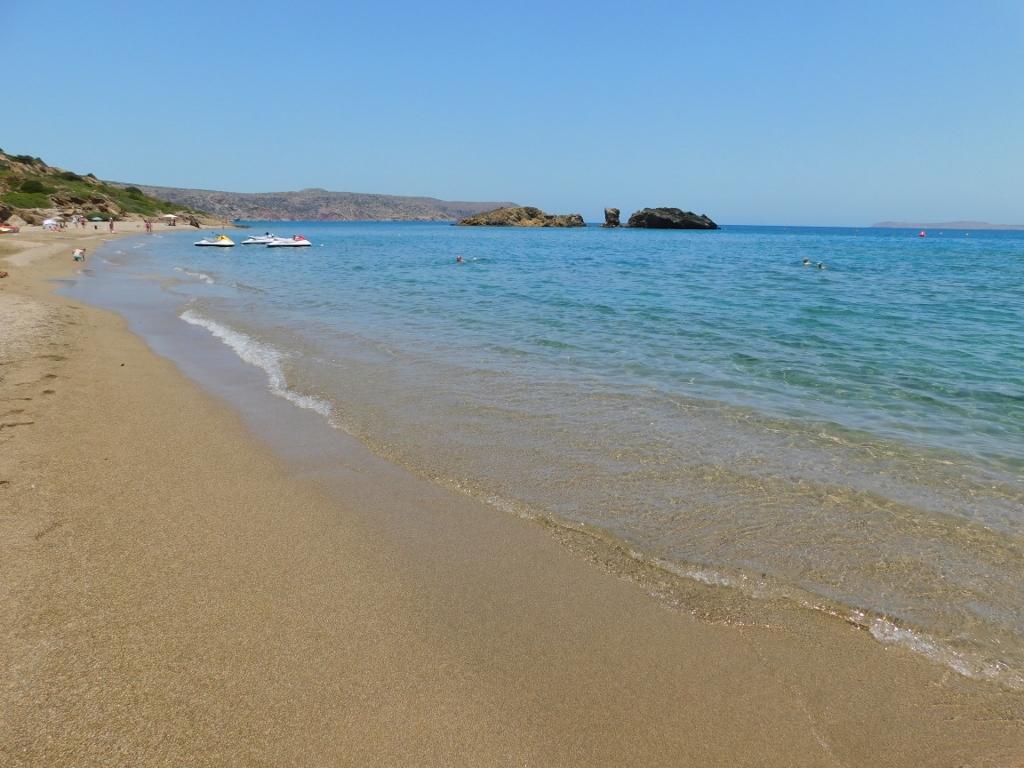 Vai Beach
Vai Beach
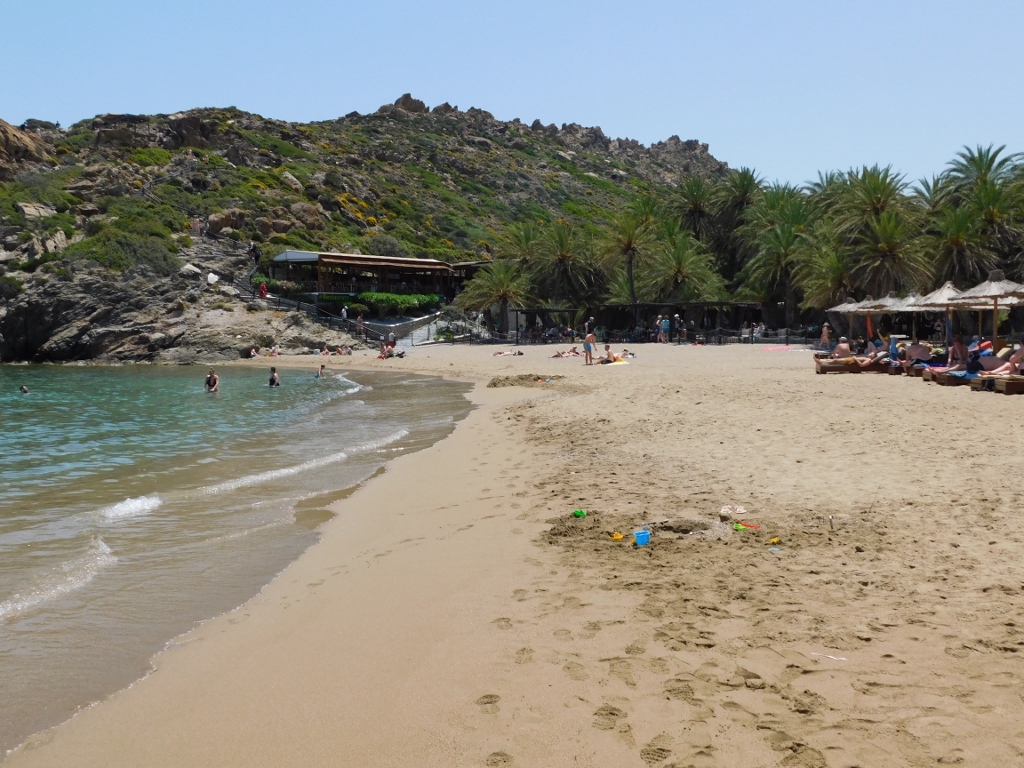 Vai Beach
Vai Beach
When I had enough of the lying down, I put on my clothes, collected my things and then continued farther by car, but only 2.5 km farther, by making some kind of a circle around the hill on the north side of Vai Beach. I practically transferred to the neighbouring Itanos Beach, but from the parking lot where I left the car, the visitor first comes across a “nameless” beach (I could not find its name anywhere).
 Nameless Beach
Nameless Beach
The main reason why I came here is that on the elevation between this “nameless” beach and Itanos Beach there is a small archaeological site that has given the name to Itanos Beach.
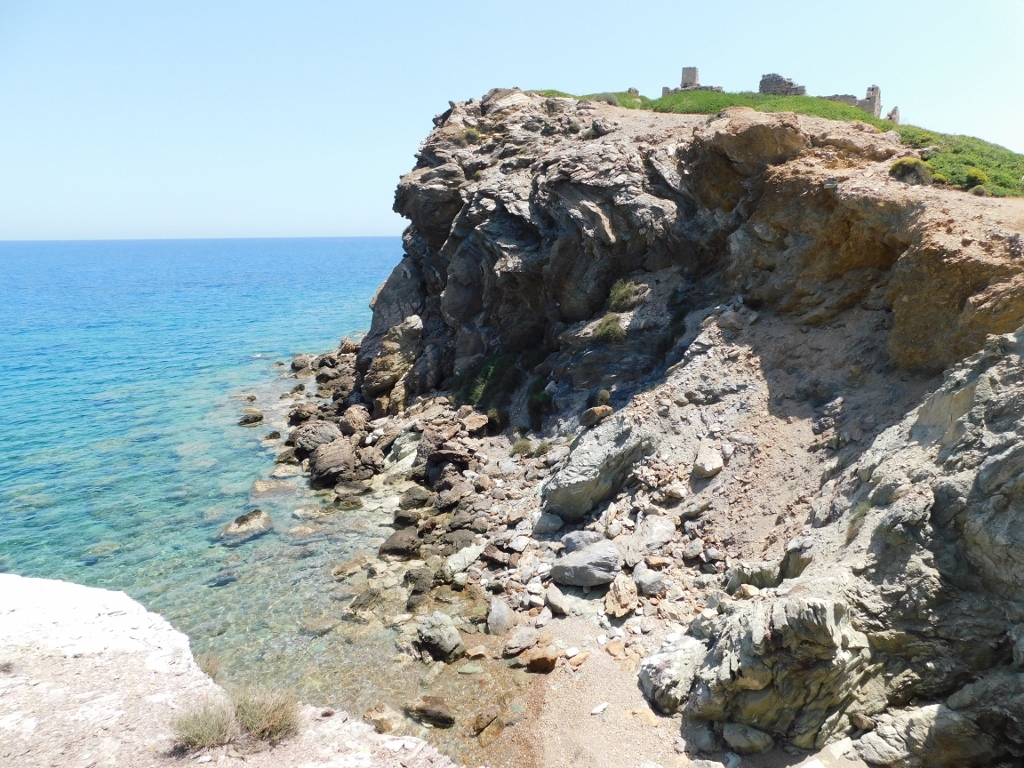 Elevation and the remains of structures on its top
Elevation and the remains of structures on its top
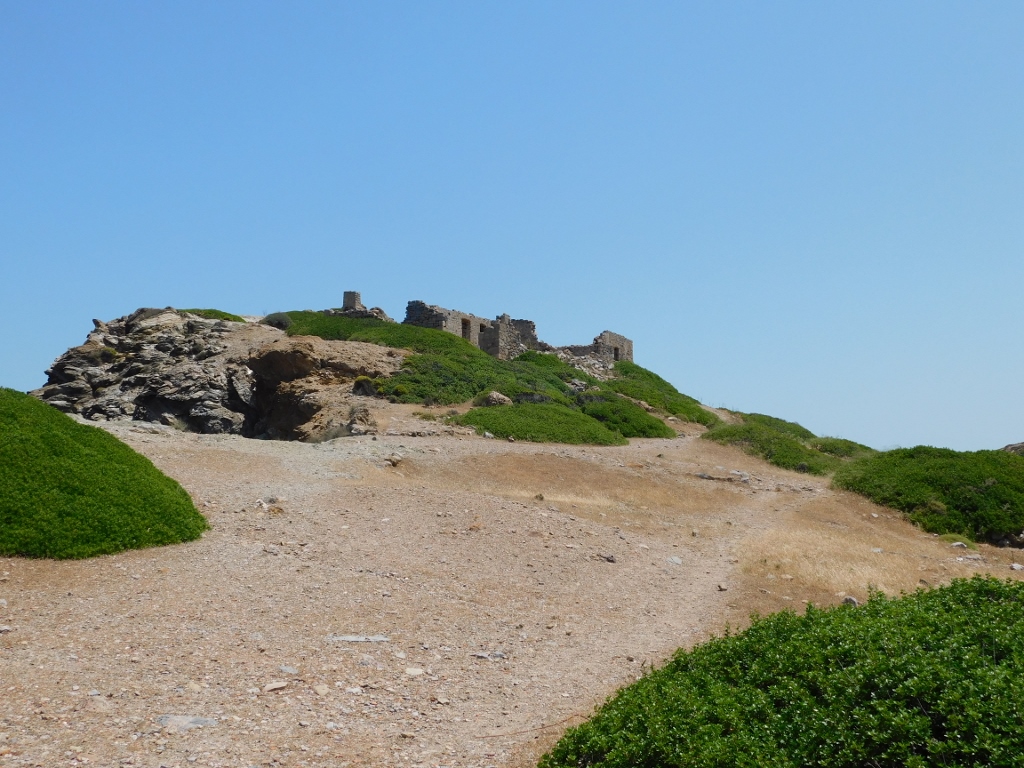 Elevation and the remains of structures on its top
Elevation and the remains of structures on its top
These are remains of an ancient Greek city and port, and although traces of human occupation even from the Neolithic period have been found, this part of a long promontory in the northeast of Crete that ends in Cape Sideros got inhabited from the 8th century BCE. The place further developed under the rule of the Ancient Rome and even later as a part of Byzantium. In the 7th century CE, Itanos was abandoned for unknown reasons.
Today, remains of ancient structures can be seen here.
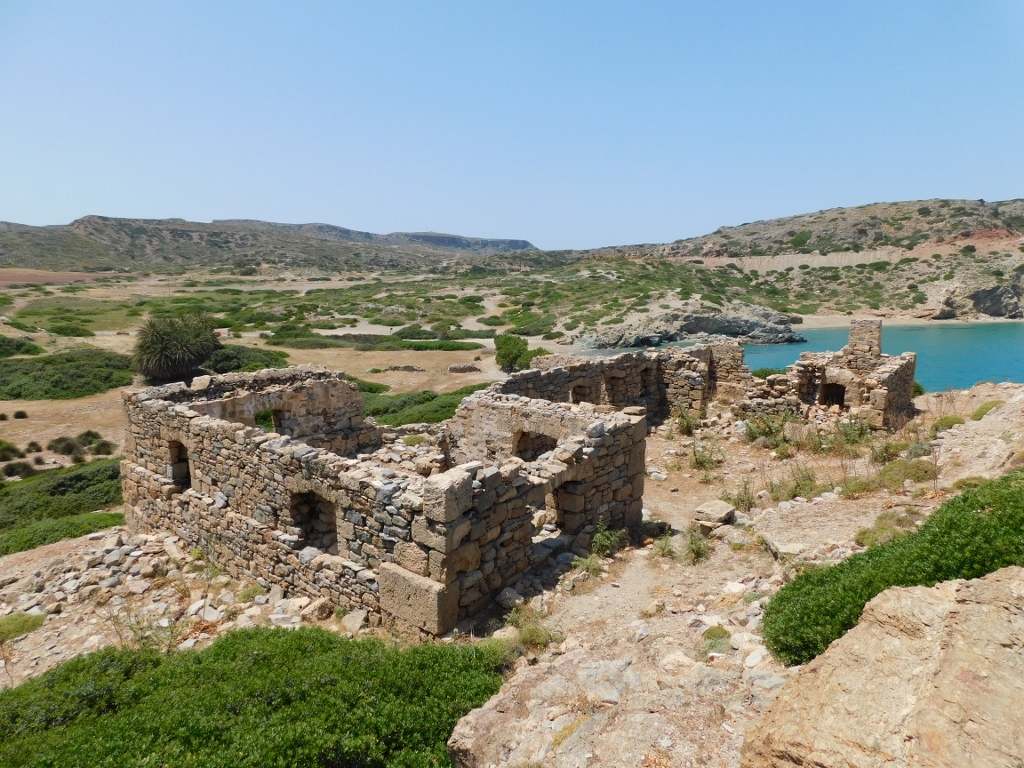 Remains of structures from ancient Itanos
Remains of structures from ancient Itanos
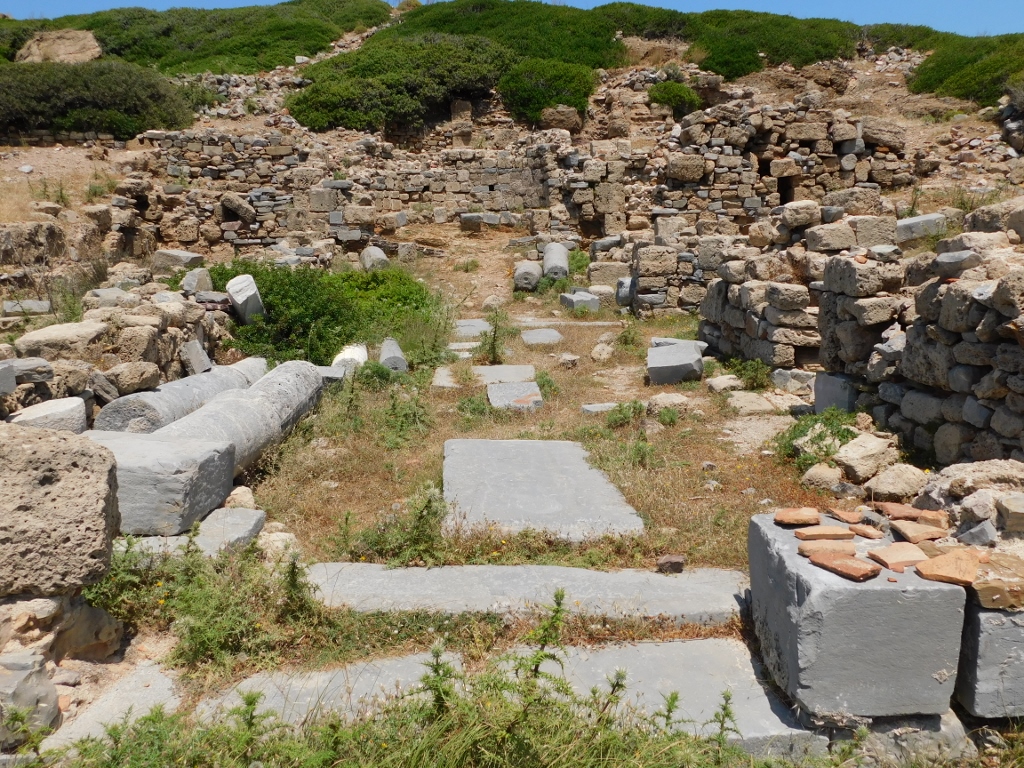 Remains of structures from ancient Itanos
Remains of structures from ancient Itanos
Although these remains are a far cry in comparison to those that I had visited earlier, I found it very interesting to walk among them and I think it was worth coming here because this is also the way to a couple of smaller beaches that are exceptionally pretty. From the elevation I first looked again at the “nameless” beach that is close to the parking lot.
 Coast north of the elevation with the remains of ancient Itanos
Coast north of the elevation with the remains of ancient Itanos
If you look at the photo above a little more closely (the photo below is the zoomed-in version), after the “nameless” beach you can see a small rock promontory and behind it a beautiful, sandy beach with a name – Erimoupolis Beach.
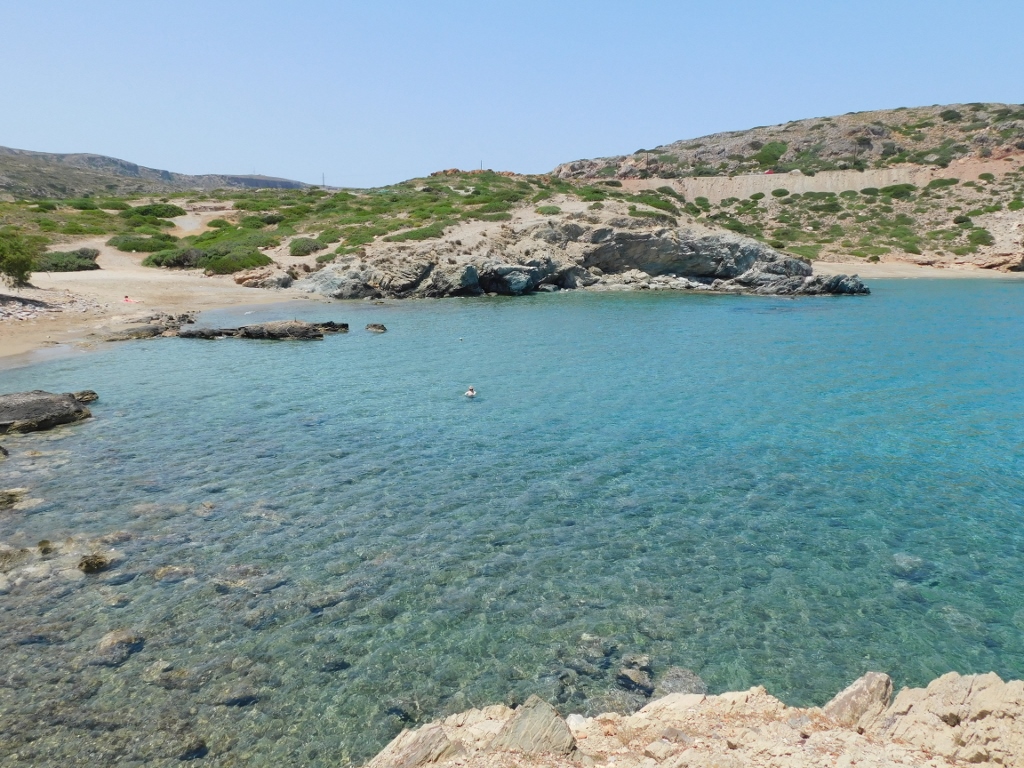 Coast north of the elevation with the remains of ancient Itanos
Coast north of the elevation with the remains of ancient Itanos
The sea that can be seen from the elevation with the remains of ancient Itanos was absolutely fantastic. But, if I hadn’t previously already tried to have a swim at Vai Beach, I would have thought I was missing out on something great. This way, I just admired the colours.
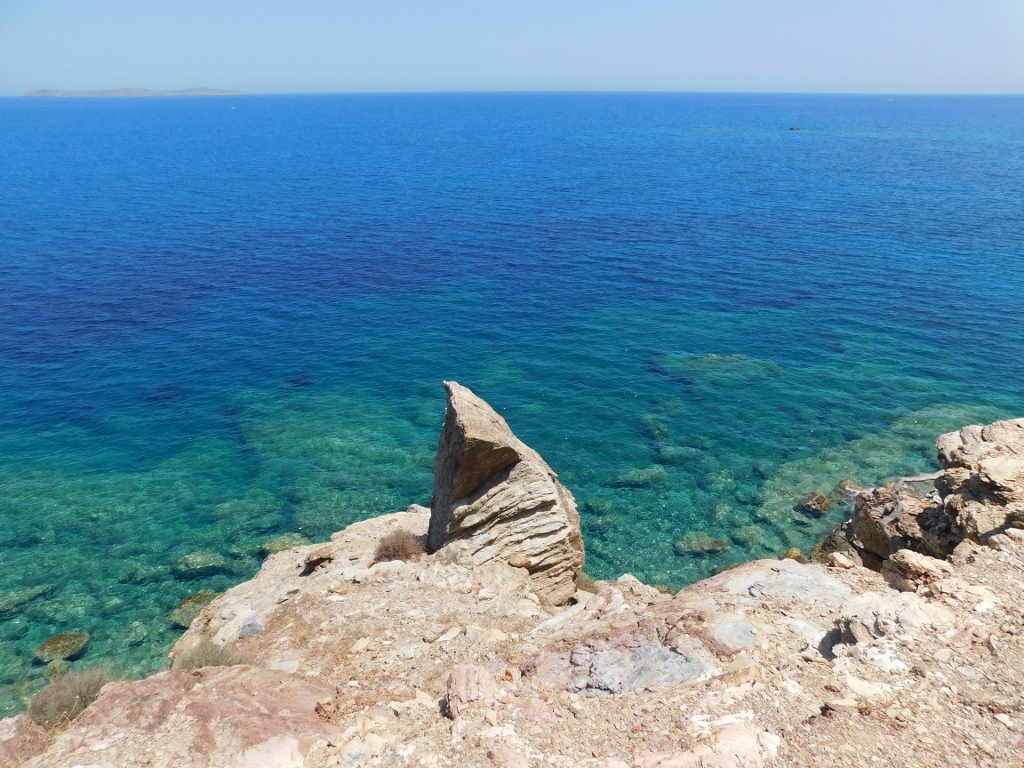 The coast and the sea beneath the remains of ancient Itanos
The coast and the sea beneath the remains of ancient Itanos
And then I turned my focus towards the south where Itanos beach is located.
 Itanos Beach
Itanos Beach
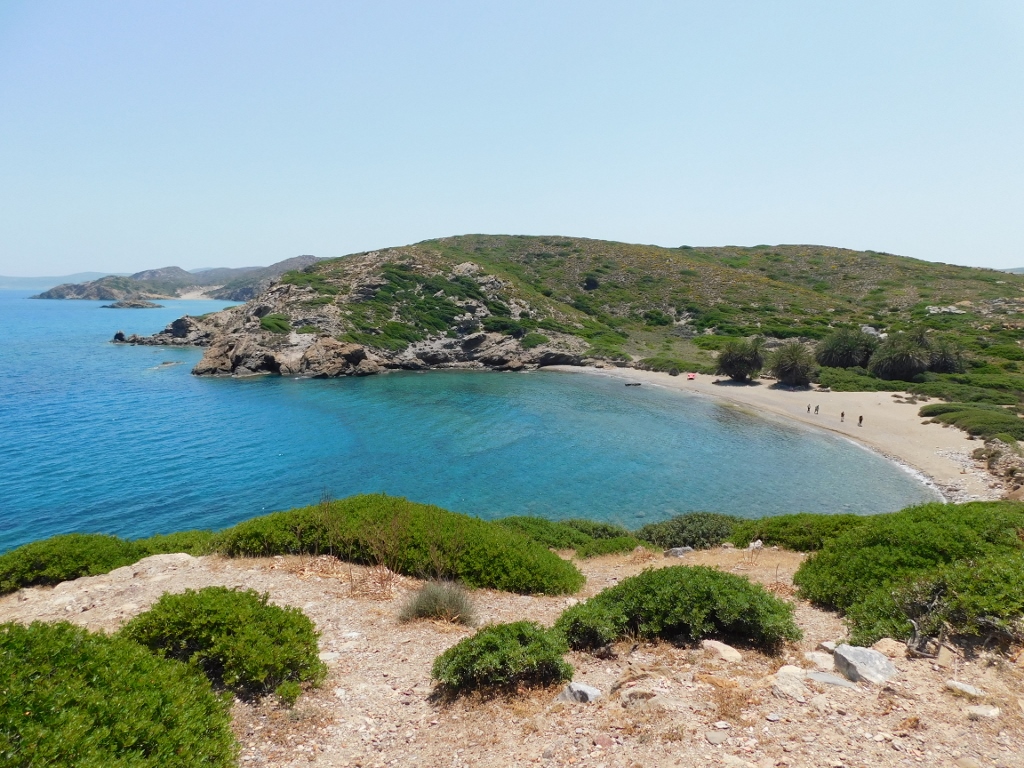 Itanos Beach
Itanos Beach
I could see Itanos Beach nicely also when I approached the remains of a basilica that had been built here on this elevation a long time ago.
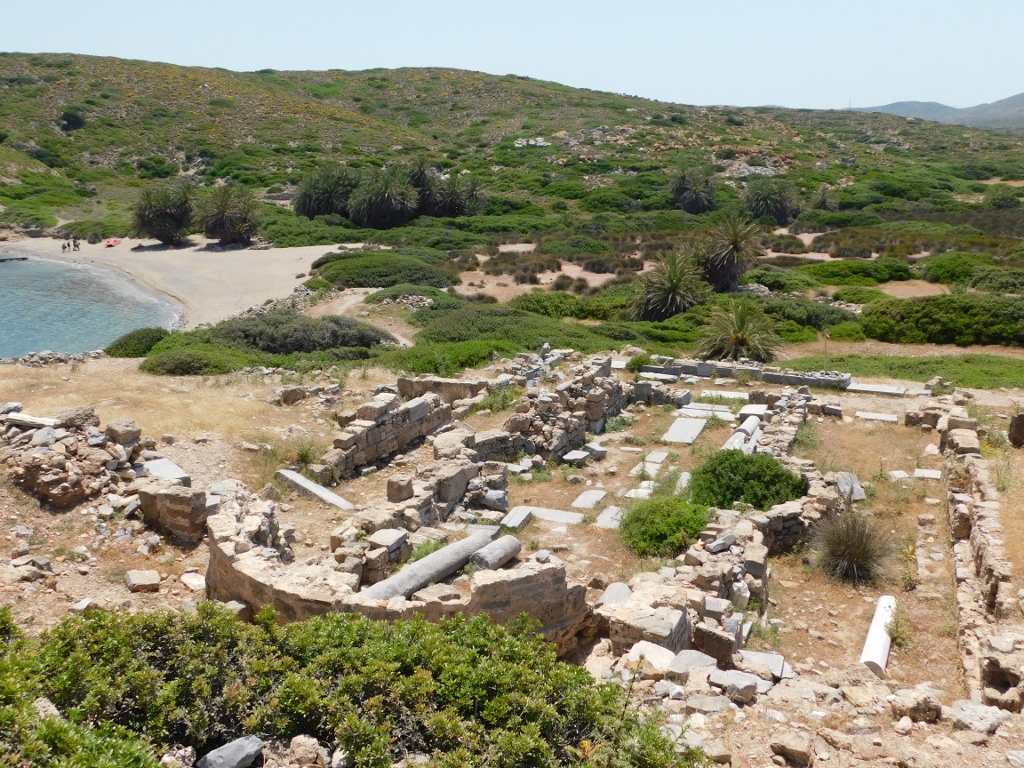 Itanos Beach and the remains of an ancient basilica
Itanos Beach and the remains of an ancient basilica
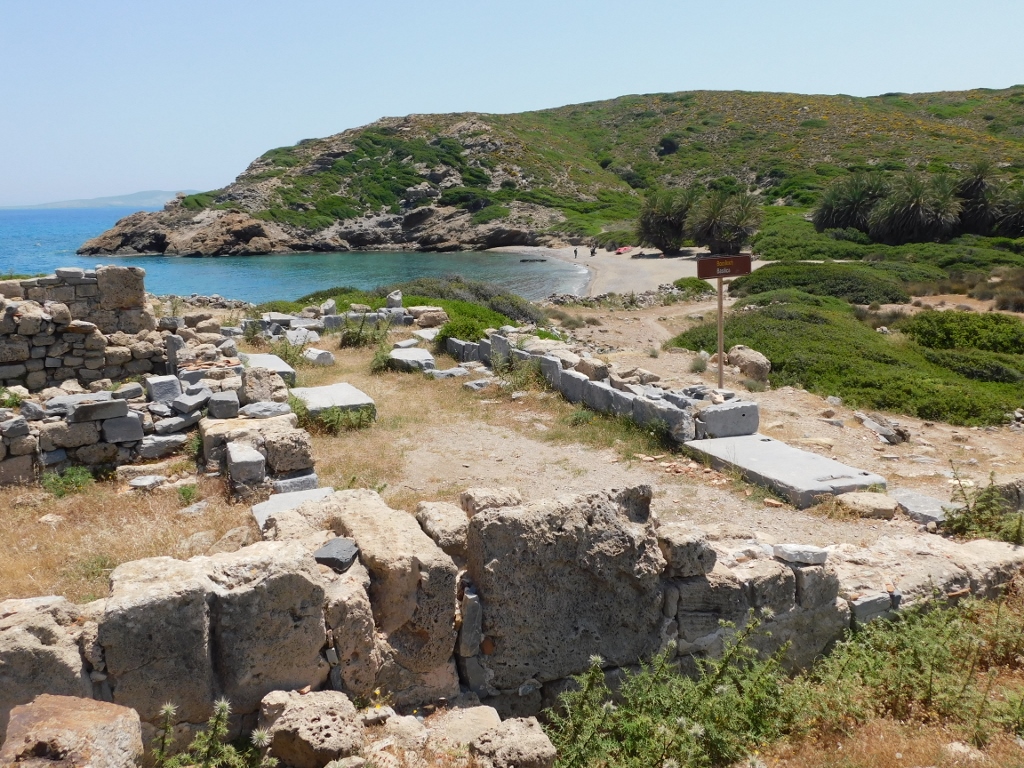 Itanos Beach and the remains of an ancient basilica
Itanos Beach and the remains of an ancient basilica
Here is yet another photo of Itanos Beach.
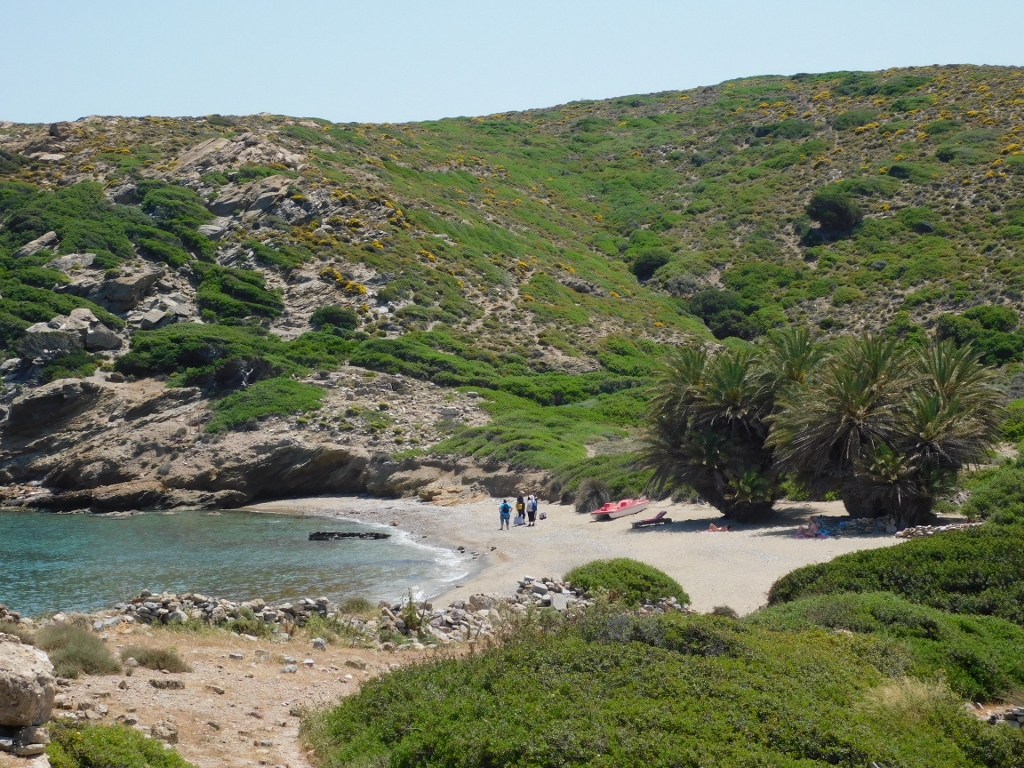 Itanos Beach
Itanos Beach
It was quite clear to me that it was still low season and therefore there were few people on the beach. In comparison to Vai Beach, this one seemed rather deserted. On the other hand, I always find it impressive when one can swim in the direct proximity of an archaeological site such as Itanos. And when one gets here, it is possible to choose between two beaches – one is to the left and the other one is to the right.
 Elevation with the remains of ancient Itanos between two beaches
Elevation with the remains of ancient Itanos between two beaches